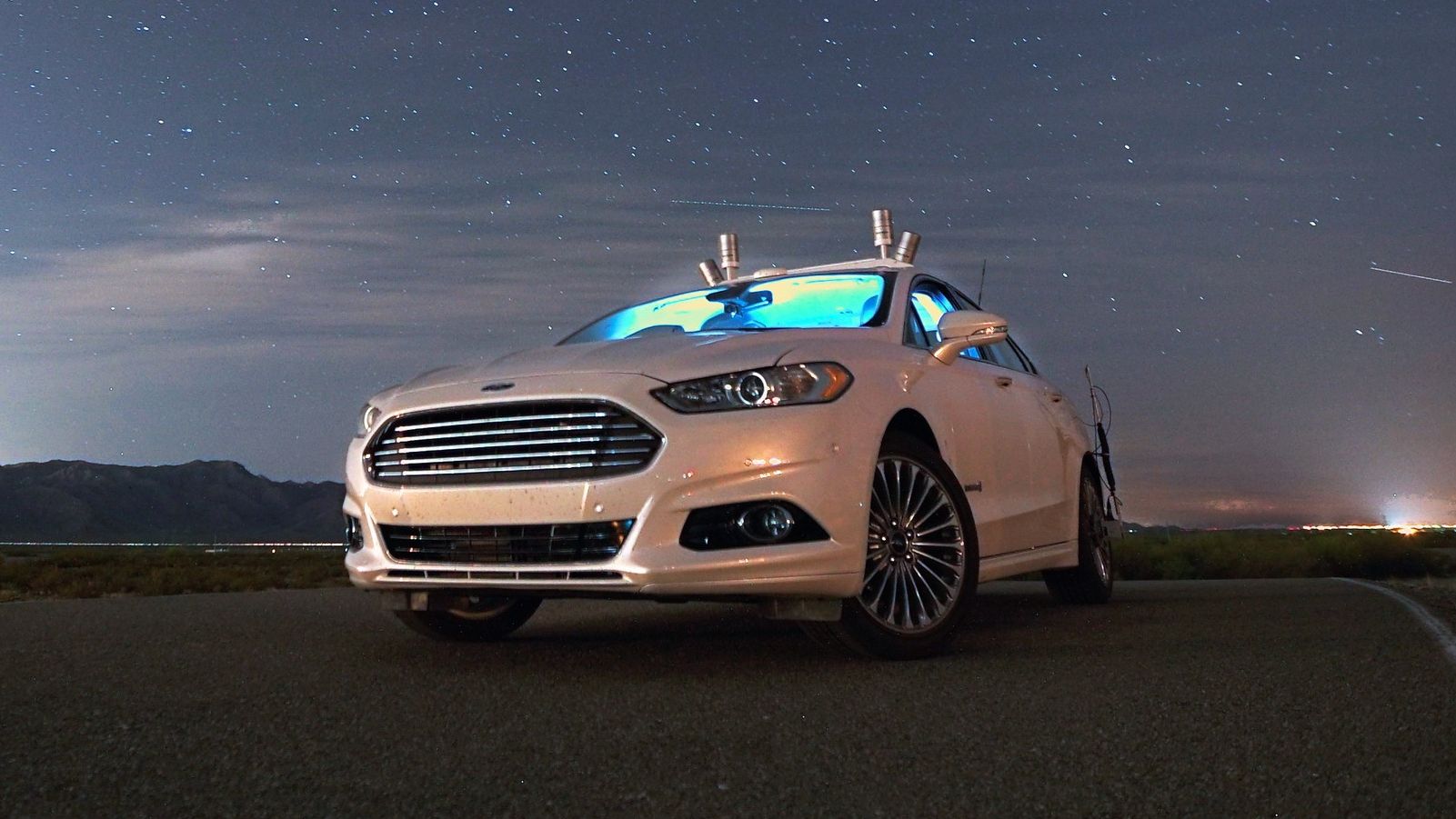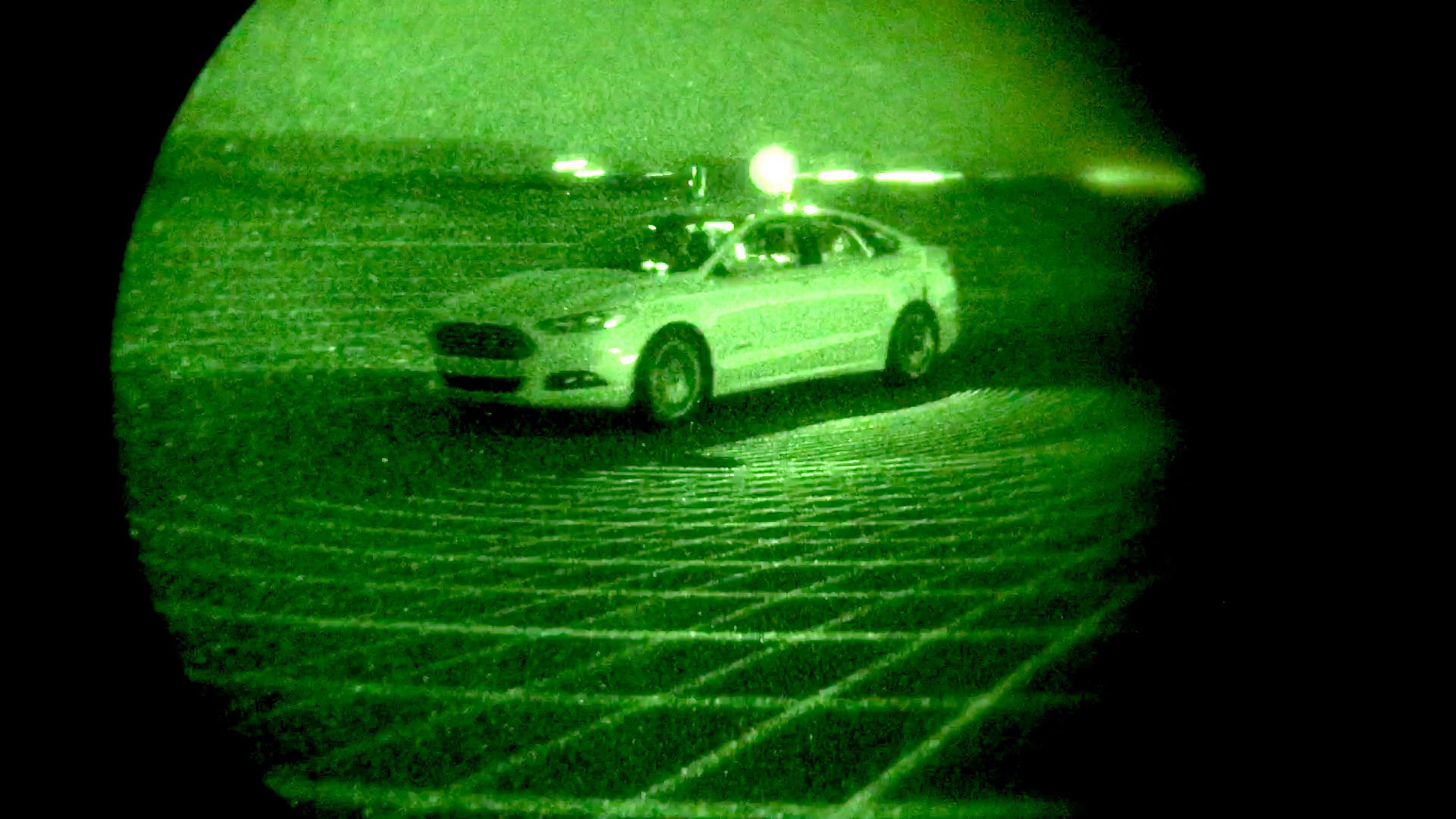If you’ve ever been broken down in the desert late at night without the luxury of supplemental lighting, you know that it doesn’t get any darker. You could even say night time in the desert is something that nightmares are made of. But, if you’re a self-driving Fusion Hybrid with autonomous->ke5282 capabilities, that darkness doesn’t matter.
See, instead of relying on cameras to detect the car’s position, Ford’->ke31s Fusion Hybrid autonomous research vehicles use the combination of high-resolution 3D maps, LiDAR, and radar to determine exactly where it is at. The beauty of this system is that it doesn’t need light to accurately pinpoint exactly where the vehicle is at, and that has now been proven as one of Ford’s Fusion Hybrid research vehicles has successfully navigated desert roads under the cover of complete darkness.
Jim McBride, Ford’s technical leader for autonomous vehicles, said, “Thanks to LiDAR, the test cars aren’t reliant on the sun shining, nor cameras detecting painted white lines on the asphalt. In fact, LiDAR allows autonomous cars to drive just as well in the dark as they do in the light of day.” For those of you who don’t know, the LiDAR system actually pulses a laser grid 2.8 million times per second, just to scan the surrounding environment. When the information is combined with information from the radar system and the high-resolution maps, the on-board computer knows the car’s precise location.
This most recent nighttime testing session took place at the Ford Arizona Proving Ground with Ford engineers strapped in for the ride. With night-vision goggles, the engineers monitored the self-driving Fusion, but did not have to intervene during the testing procedure. Wayne Williams, a research scientist and engineer for Ford, said, “Inside the car, I could feel it moving, but when I looked out the window, I only saw darkness. As I rode in the back seat, I was following the car’s progression in real time using computer monitoring. Sure enough, it stayed precisely on track along those winding roads.”
So, as it turns out, autonomous cars like Ford’s Fusion Hybrid research vehicles don’t need the light to see where they are going. This experiment does demonstrate how far autonomous technology has advanced, but I doubt we’ll be seeing any light-less cars, autonomous or not, anytime in the future.
Continue reading for the full story.
Why it matters
I have to say that I’m pretty impressed with how far engineers have come with autonomous technology. The fact that a car like the Fusion can navigate without any light other than that provided from the night’s sky is admirable, to say the least, but I’m still very sketchy of the whole idea.
First off, I have a feeling that eventually human driving will be outlawed. Just the thought is enough to send chills down my spine. Even if it doesn’t come to that, artificial intelligence is still a long way away from being able to mimic human decision-making. A prime example is that recent accident between a Google self-driving car and a bus. The car determined the bus would slow to let it over, but the human driver on the bus didn’t see it that way. Smash.
Either way, kudos to Ford for demonstrating a decent (and pretty cool) advancement in autonomous technology, but outside of showing how well the on-board systems can pinpoint the car’s location regardless of the situation, the idea of driving in zero light is rather pointless.


